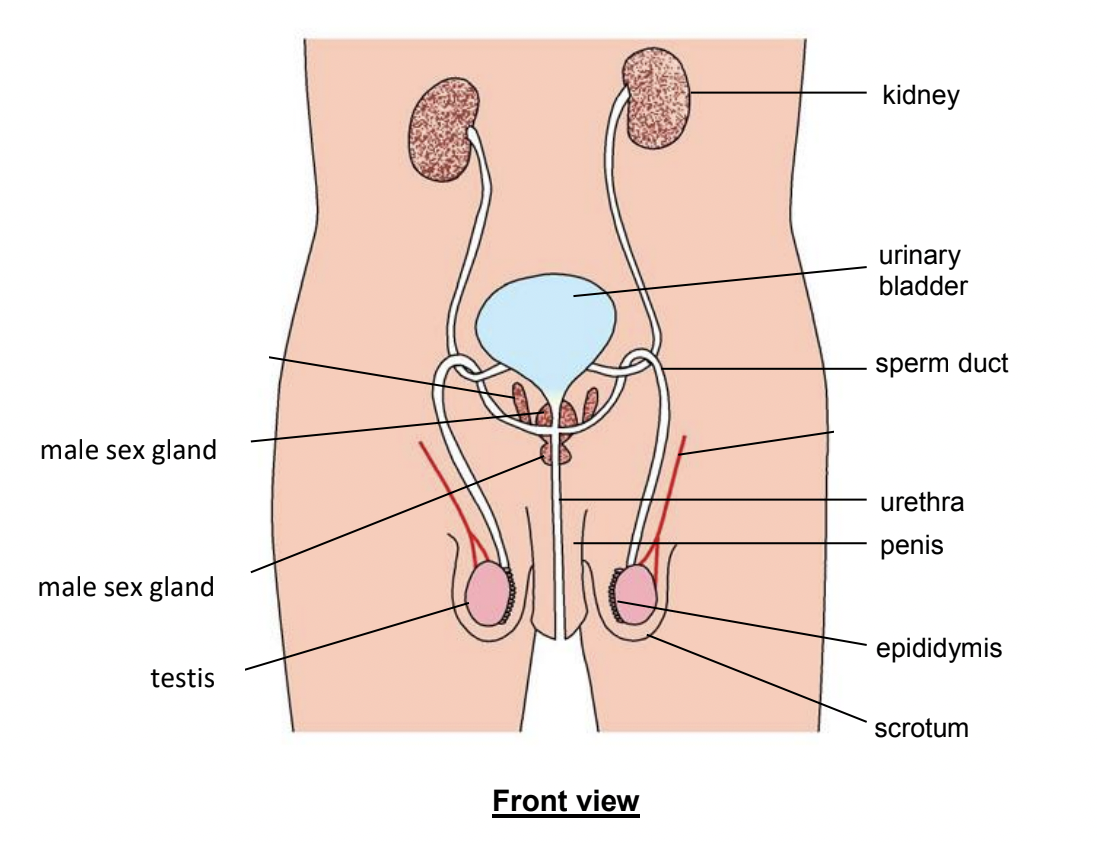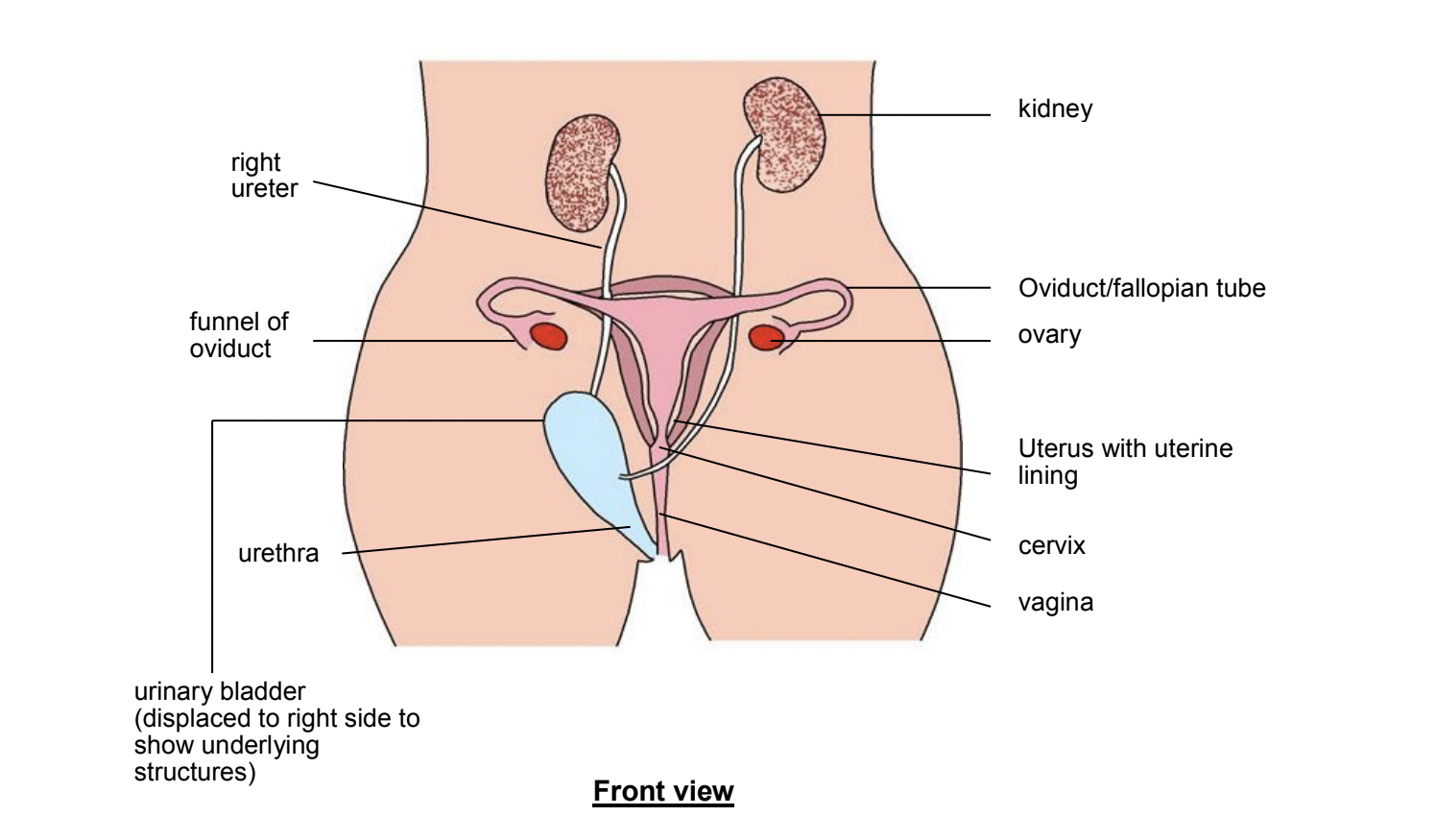sexual reproduction and heredity
What is the Function of the Human Sexual Reproductive System?
The role of reproduction is to provide for the continued existence of a species; it is the process by which living organisms replicate themselves.
Sexual Reproduction Sexual reproduction involves two parents. Each parent produces reproductive sex cells called gametes. In animals and humans,
→ male gametes are sperm cells
→ female gametes are egg cells
Each gamete contains only half the number of chromosomes found in other cells of the organism. The process in which the nucleus of a female and male gamete fuses is called fertilisation. The fertilised cell that results is referred to as a zygote. This new cell contains the full number of 46 chromosomes. Half of it comes from the father, and half comes from the mother. The genetic material from both parents has combined to form a unique individual who is genetically dissimilar from the parents.
Sexual reproduction …..
Involves a female and male parent (two parents)
Each parent passes on half its genetic material to its offspring
Gametes are produced by the organisms
Offspring are genetically dissimilar to parent
Involves the fusion of gametes during fertlisation
Heredity
Passing down of genetic materials from one generation to the next during sexual reproduction is heredity. Heredity is why you look similar to your mum or dad. People’s bodies have traits (characteristics), like the shape of their nose or the colour of their eyes, and parents pass on these traitsto their children, this is heredity. Biological traits are physical or behavioral characteristics of an organism. They may be determined by genetics and/ or environmental factors. Some traits are controlled by genes that pass from parent to child. Others are acquired through learning. But most are influenced by a combination of genes and environmental factors. These are some examples of variable traits that are easy to observe.
We are all unique. Even though we share some characteristics with our peers and our family members, every one of us has a unique combination of traits. We are made of cells. All cells have genetic material called DNA. All of us are made up of DNA from both our parents and that is why we have traits from both our parents. Human has 23 pairs of chromosomes. Every individual inherited 23 chromosomes from each of their parent. Genes reside in a cell’s chromosomes, each of which contains many genes. Hence individuals have two of each gene that codes for a certain trait, one acquired from each parent.
Male Reproductive System

functions:
male sex gland → produces enzymes and nutrients for the sperm to swim actively
testis (singular), testes (plural) → produces male reproductive cells (sperms), and male hormones
sperm duct → long narrow tube for sperm to be transported
scrotum → regulates temperature of the testes for sperm production, protects the testes
epididymis → coiled narrow tube where inactive sperm is stored before it enters the sperm duct
urinary bladder → stores urine
kindly → gets rid of waste from the body, produces urine
urethra → tube which passes through centre of penis to the exterior, transports semen and urine at different times
penis → deposits sperm into vagina during sexual intercourse, blood vessels in the erectile tissue become filled with blood during arousal
Female Reproductive System

functions:
oviduct → muscular tube where fertilisation occurs, leads from ovary to uterus, transports mature ovum every month
uterus → has thick, muscular elastic walls. where a foetus develops during pregnancy. inner lining is spongy and filled with blood capillaries, so as to allow implantation of a fertilised egg
cervix → circular ring of muscle that dilates to allow the passage of baby during birth
urethra → secrets fluids during sexual arousal, transport urine from urinary bladder out the body
urinary bladder → stores urine
ureter → transport urine from kidney to urinary bladder
vagina → semen is deposited during sexual intercourse
ovary → produces eggs that are released once a month, produces female hormones oestrogen and progesterone
kidney → produces urine and filters waste
Menstrual cycle
The menstrual cycle in women is a recurring process, each cycle lasting for around 28 days. During the process, the lining of the uterus (uterine lining/ endometrium) is prepared for pregnancy, and if pregnancy does not happen, the uterine lining is then shedded during menstruation and the whole cycle starts again. Menstrual cycles may also range from 21 to 33 days. There is a natural variation in the length of the menstrual cycle among different women. In addition, stress, tiredness, illness, an unbalanced diet or malnutrition may alter or stop the menstrual cycle and change the interval between each cycle. The first day of menstruation is the first day of the menstrual cycle. During menstruation, the uterine lining breaks down and flows from the uterus out of the body through the vagina. Menstrual discharge consists of blood, uterine lining and the unfertilised egg. During ovulation, a mature egg is released from the ovary. In the menstrual cycle, ovulation usually occurs about 14 days before next menstruation. After ovulation, uterus lining further thickens and becomes well-supplied with blood vessels to prepare for the possible implantation of the embryo. If the egg is fertilised by a sperm, it forms a zygote. The zygote divides into a ball of cells known as the embryo as it travels down the fallopian tube. The embryo implants itself in the uterine lining and continues to develop in the uterus into a foetus. If the egg is not fertilised, the egg will travel along the fallopian tube and eventually disintegrates in the uterus. The egg, together with blood and uterine lining, is discharged through the vagina and the menstrual cycle begins again. Several hormones control the menstrual cycle, which includes controlling the release of a mature egg each month from an ovary, as well as the thickness of the uterus lining. Oestrogen stimulates ovulation while progesterone maintains the uterine lining.
Menstrual cycle:
Menstruation (Days 1 – 5)
Takes place when there is no fertilization the previous cycle.
Thick uterine wall supplied with blood capillaries will breakdown together with unfertilized ovum.
Discharged out of the female’s body through the vagina.
Repair of Uterine Lining (Days 6 - 13)
The uterine lining starts to thicken, and blood vessels form inside the thick lining.
Ovulation (Day 14)
Ovulation takes place about 14 days after menstruation starts.
One of the ovaries releases a mature ovum.
'Fertile Period' is usually 3 days before and 3 days after ovulation (Day 11-17). Ovum usually can survive for about 12-24 hours after ovulation while sperms can survive within the female for about 3 days.
If there is no fertilization, the ovum dies and disintegrates.
Maintain thickness of uterine lining (Days 15 - 28)
Preparation for fertilization.
The lining of the uterus is at its thickest.
If there was no fusion between the sperm and ovum (i.e., no fertilization), the thick uterus lining begins to break down.
If fertilization occurs, the thickness of the uterine lining is maintained to support fetus development.
Fertilisation and Implantation
During fertilization, 2 haploid (n) gametes (one from sperm and one from egg) fuse to form a zygote, resulting in a diploid (2n). Zygote divides by normal cell division resulting in all the cells in the child having diploid number of chromosomes (except in the egg and sperm cell). After the zygote continually divides, a ball of cells known as embryo is formed, which will implant in the uterine lining of the uterus.
Fertilization and Early Development of the Zygote Fertilization is the fusion of the nuclei of a sperm and an egg to form a zygote. Millions of sperm released from the penis are deposited in the vagina. The sperms swim from vagina up the uterus and into the oviducts / fallopian tubes. Many sperms die before reaching these tubes. Some sperms may go into the fallopian tube where the ovum is absent and fail to fertilise any. If a sperm meets an egg in a fallopian tube, fertilization takes place; only one sperm will fertilize the egg.
The fertilized egg will develop to form a small ball of cells. The small ball of cells, now called the embryo, moves down the fallopian tube and enters the uterus.
The embryo embeds itself in the uterine lining and develops. This process is called implantation. The embryo also secretes a hormone which prevents the uterine lining from breaking down. Eventually, the placenta will take over the production of hormones to maintain the uterine lining.